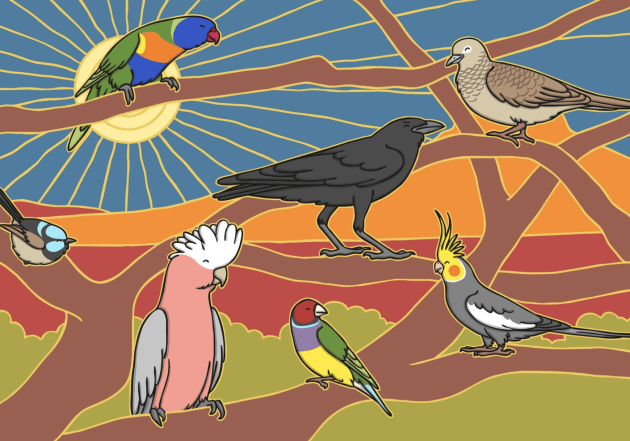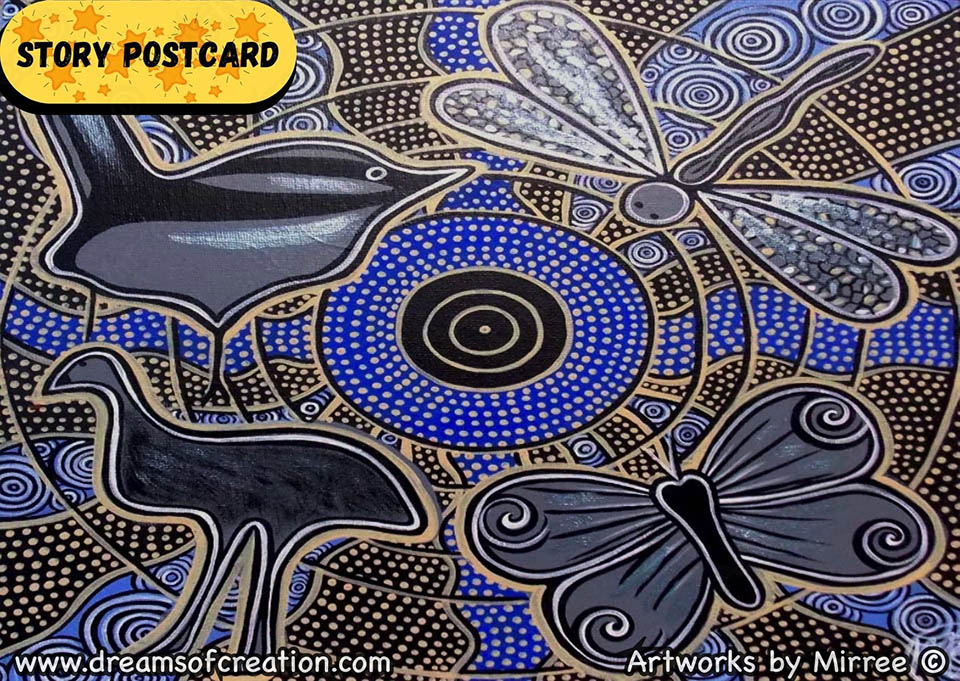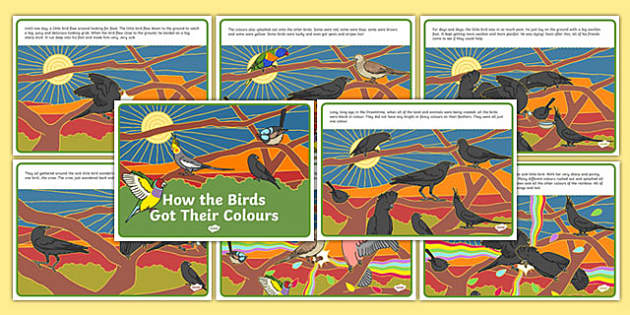A Sky Full of Stories: Aboriginal Connection to Birds
A Sky Full of Stories: Aboriginal Connection to Birds

The vast landscapes of Australia, with its diverse ecosystems and vibrant wildlife, have been home to Aboriginal people for over 65,000 years. This deep connection to the land has fostered a profound understanding of the natural world, including its feathered inhabitants. Birds, with their soaring flight, melodious songs, and intricate behaviours, hold a special place in Aboriginal culture, woven into their stories, ceremonies, and daily lives.
A Tapestry of Stories:
Related Articles: A Sky Full of Stories: Aboriginal Connection to Birds
- The Totem Of The Tubbagah People: A Journey Through Symbolism And Identity
- A Taste Of The Outback: Exploring The Unique Flavors Of Australia’s Native Fruits
- A Taste Of The Outback: Exploring The Native Fruits Of Australia
- The Dreamtime: A Journey Into The Aboriginal Worldview
- Decoding The Dance Of The Earth: The Symbolism Of Kangaroo Tracks In Aboriginal Art
Aboriginal cultures are rich with diverse creation stories, each weaving a unique narrative about the origin of the world and its inhabitants. Birds often feature prominently in these stories, embodying ancestral spirits, guiding deities, or even representing the very essence of creation itself.
For instance, the Wiradjuri people of New South Wales tell the story of the Emu, a powerful and enduring creature, who is believed to have brought fire to the land. This story highlights the importance of fire in Aboriginal culture, not only as a tool for survival but also as a symbol of transformation and renewal.
The Rainbow Serpent and the Birds:
Across many Aboriginal cultures, the Rainbow Serpent, a powerful and benevolent being, plays a significant role in creation stories. In the Yolngu tradition of Arnhem Land, the Rainbow Serpent is believed to have created the land and its creatures, including the Brolga, a majestic crane that is revered for its beauty and grace.
The Brolga’s dance, a graceful and intricate performance, is often interpreted as a representation of the Rainbow Serpent’s journey across the land, bringing life and fertility. This connection between the Brolga and the Rainbow Serpent underscores the deep spiritual significance of birds in Aboriginal culture.
Beyond the Stories: The Practical Connection:
The relationship between Aboriginal people and birds extends beyond mythology and spirituality. Birds have been crucial for survival, providing sustenance, resources, and even practical knowledge about the environment.
Food and Resources:

Many bird species have been a vital source of food for Aboriginal people. The kookaburra, with its distinctive laugh, is a common sight across Australia. Its meat was a valuable source of protein, while its feathers were used for adornment and ceremonial purposes.
The emu was another important food source, providing not only meat but also fat, which was used for cooking and other purposes. The eggs of various bird species, particularly those of the magpie goose, were also a valuable source of nutrition.
Ecological Indicators:
Aboriginal people have developed a deep understanding of the interconnectedness of all living things. Birds, with their ability to travel across vast distances and their sensitivity to environmental changes, are seen as important indicators of the health of the ecosystem.
For example, the bush stone-curlew, a nocturnal bird found across Australia, is known to be sensitive to changes in habitat. Its presence or absence can signal the health of the surrounding environment, providing valuable insights for land management practices.

Ceremonies and Rituals:
Birds are often incorporated into Aboriginal ceremonies and rituals, reflecting their spiritual significance and connection to the land. In some traditions, birds are used as messengers, carrying messages between the spirit world and the living.
The budgerigar, a small, brightly colored parrot, is often associated with the spirit world in some Aboriginal cultures. Its vibrant plumage and playful nature are seen as a representation of joy and vitality.
Art and Symbolism:
Birds are a recurring motif in Aboriginal art, their vibrant colours and intricate patterns often serving as powerful symbols. The eaglehawk, with its powerful wings and sharp eyesight, is a symbol of strength, leadership, and connection to the sky.

The kookaburra, with its distinctive laugh, is often depicted in Aboriginal art as a symbol of joy, laughter, and the cycle of life.
The Impact of Colonization:
The arrival of Europeans in Australia had a profound impact on Aboriginal culture, including their relationship with birds. The introduction of new species, the clearing of native vegetation, and the hunting of birds for sport and commercial purposes have led to the decline of many bird populations.
However, despite these challenges, Aboriginal people continue to hold a deep connection to birds, cherishing their cultural significance and advocating for their protection.
A Legacy of Knowledge:
The knowledge and understanding of birds held by Aboriginal people represent a rich and invaluable cultural heritage. This knowledge, passed down through generations, provides insights into the complex relationships between humans, birds, and the environment.
By learning from the wisdom of Aboriginal cultures, we can gain a deeper appreciation for the interconnectedness of all living things and the importance of protecting biodiversity for future generations.
FAQ: Aboriginal People and Birds
Q: What is the spiritual significance of birds in Aboriginal culture?
A: Birds often represent ancestral spirits, guiding deities, and the essence of creation itself in Aboriginal mythology. They are deeply intertwined with creation stories and ceremonies.
Q: How did Aboriginal people use birds for practical purposes?
A: Birds provided food, resources, and ecological indicators. They were a vital source of protein, their feathers were used for adornment and ceremonies, and their presence or absence signaled the health of the environment.
Q: What impact has colonization had on the relationship between Aboriginal people and birds?
A: Colonization has led to the decline of many bird populations through habitat loss, introduced species, and hunting. Despite these challenges, Aboriginal people continue to hold a deep connection to birds and advocate for their protection.
Q: Why is it important to learn about the Aboriginal connection to birds?
A: Understanding Aboriginal knowledge of birds provides insights into the complex relationships between humans, birds, and the environment. It helps us appreciate the interconnectedness of all living things and the importance of biodiversity conservation.

Closure
Thus, we hope this article has provided valuable insights into A Sky Full of Stories: Aboriginal Connection to Birds. We hope you find this article informative and beneficial. See you in our next article!


